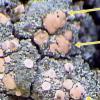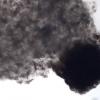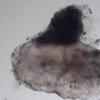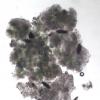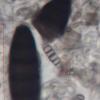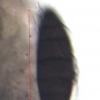
20-09-2015 22:16
Lepista ZacariasHi everyone,I found this lichenicolous fungus on t

20-09-2015 00:24
 Rubén Martínez-Gil
Rubén Martínez-Gil
Hola a todos. Subo unas fotos de un asco que hemo

19-09-2015 20:06
Eduard OsieckOn the same Alnus branch with Dimerella pineti (so

18-09-2015 17:07
Marja PennanenHi,these nearly 1mm wide cups grow on Pteridium aq

17-09-2015 22:48
Regina SiemianowskiHi to all,today I have found a black, immersed per

17-09-2015 20:45
 Chris Yeates
Chris Yeates
Bonsoir tousI think I have got this correct, but a

16-09-2015 20:09
 Andreas Gminder
Andreas Gminder
Hello, today I found a small white Hyaloscyph

16-09-2015 20:18
 Andreas Gminder
Andreas Gminder
Hello, another one which puzzles me. Macroscopic
Lichenicolous fungus on Bacidia - 2015-09-19
Lepista Zacarias,
20-09-2015 22:16
I found this lichenicolous fungus on the small apothecia of a Bacidia sp.. It was hard to select photos from the ascoma, due to the size. However, this fungus as very peculiar feature: its spores are fusiforme, multiseptate (up to 9 septa), and "giant" with the following dimensions:
(36.1) 37.1 - 60.1 (62.1) x (8.3) 8.8 - 18.4 (21.7) µm
Q = (2.7) 2.8 - 4.1 (4.5) ; N = 13, Me = 51.5 x 15 µm ; Qe = 3.6 .
I have tryed the site Lichenicolous net, but I as not able to find anything similar. Anyone have any suggestion of what this could be?
Thanks,
zaca
Alain GARDIENNET,
20-09-2015 22:38
Re : Lichenicolous fungus on Bacidia - 2015-09-19
Hi Zaca,
Not sure that these big ascospores belong to the lichenicolous fungus. They could belong to a Navicella species growing on the same substrate.
Have you observed asci ?
Alain
Lepista Zacarias,
20-09-2015 22:40
Re : Lichenicolous fungus on Bacidia - 2015-09-19
Hi Alain,
Thanks for your prompt response. Concerning your question the answer is NO; I didn't found any asci,
Best regards,
zaca
Thanks for your prompt response. Concerning your question the answer is NO; I didn't found any asci,
Best regards,
zaca
